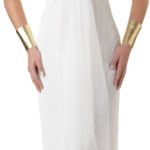
On This summer 19, 711, a military of Arabs and Berbers unified underneath the aegis from the Islamic Umayyad caliphate arrived around the Iberian Peninsula. Within the next seven years, through diplomacy and warfare, they introduced the whole peninsula aside from Galicia and Asturias within the far north under Islamic control however, frontiers using the Christian north were constantly in flux. The brand new Islamic territories, known as al-Andalus by Muslims, were administered with a provincial government established in the specific Umayyad caliphate in Damascus and centered in Córdoba. Of pieces of art along with other material culture only coins and scant ceramic fragments remain out of this early duration of the Umayyad governors (711–56).
Once the Umayyad caliphate of Damascus was overthrown through the ‘Abbasids in 750, the final surviving person in the Umayyad empire fled to The country, creating themself as Emir ‘Abd al-Rahman I and therefore initiating the Umayyad emirate (756–929). ‘Abd al-Rahman I (r. 756–88) made Córdoba his capital and unified al-Andalus under his rule having a firm hands, while creating diplomatic ties using the northern Christian kingdoms, North Africa, and also the Byzantine empire and looking after cultural connection with the ‘Abbasids in Baghdad. The first construction from the Great Mosque of Córdoba under his patronage was the crowning achievement of the formative duration of Hispano-Islamic art and architecture.

The Umayyads reclaimed their to the caliphate throughout the reign of ‘Abd al-Rahman III (r. 912–61), who grew to become the very first Spanish Umayyad emir to declare themself caliph (929). Underneath the Umayyad caliphate (929–1031), Córdoba grew to become possibly the finest intellectual center of Europe, with celebrated libraries and schools. Hispano-Umayyad art arrived at its apogee throughout the extended reign of ‘Abd al-Rahman III and the boy al-Hakam II (r. 961–76) and also the regency from the effective ‘Amirids, particularly al-Mansur (978–1002), chamberlain towards the nominal ruler, the kid-prince Hisham II (r. 976–1013 with interruption). Despite their open rejection of ‘Abbasid political authority, the Umayyads of Córdoba emulated the opulent palatial arts from the centers of ‘Abbasid power, Baghdad and Samarra’. There is also influence in the Fatimid rulers, who’d established a completely independent Shi’i caliphate in North Africa in 909 and occupied Egypt in 969. Possibly as a result of these eastern Mediterranean cultural impulses, which coexisted having a strong indigenous artistic component, there started to look in Córdoba a revival from the Umayyad period, almost a nostalgia for that time once the Umayyads ruled the Islamic world from Damascus. Art patronage as an indication of kingship and authority is really a theme that emerged from all of these creative appropriations from abroad and also the past. Luxurious objects for example boxes of created ivory and gilt silver, bronze animal statuary, and highly figured silks were commissioned for castles decorated with ornate marble capitals, stucco wall panels, and marble fountains. ‘Abd al-Rahman III’s palace city at Madinat al-Zahra‘ elevated the bar for artistic style of the caliphate, and al-Hakam II’s accessory for the truly amazing Mosque of Córdoba marked the imposition of the palatial degree of luxury and hierarchy about this religious monument.
Resourse: http://metmuseum.org/toah/hd/sumay/
Popular Videos – Umayyad Caliphate
Video COMMENTS:
Egg Mapping: 1000! Thanks!
The Maltese Empire: 1.4k now xD
Egg Mapping: thx
Sono: The caliphate was just like Umayyad bro?
Jake_ HD: 2000 Views!!!!
Egg Mapping: thank\ns!!!!!!!!!!!!!!!!!!!!!!!
F4ЯUS Productions: Nice Video Sir
Egg Mapping: Thank you
Egg Mapping: 701!
Egg Mapping: 634!







